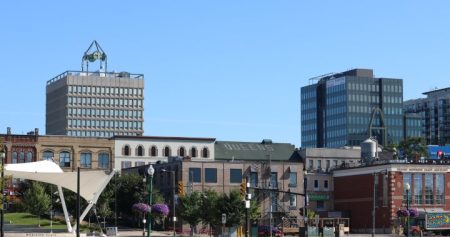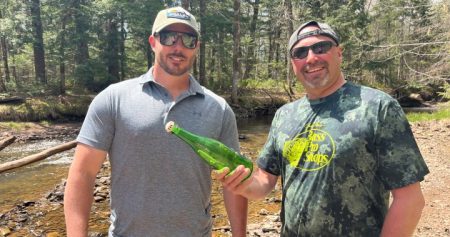Some Indigenous communities in northern Alberta are hopeful that the Trans Mountain pipeline expansion will mark the start of a new chapter in their relationship with Canada’s oilsands industry. The $34 billion pipeline project promises improved access to export markets for oilsands producers, which are expected to reach all-time-high output this year. The Fort McKay First Nation, located in the heart of the Athabasca oilsands, sees the opening of the pipeline as a significant opportunity. Chief Raymond Powder emphasized the need to leverage this opportunity to benefit the community of around 800 people of Dene, Cree, and Métis descent, emphasizing the importance of growth as the industry expands.
Fort McKay is surrounded by industrial development, with the scent of oilsands facilities present in the air. Despite the community’s complicated relationship with the oilsands industry, it is one of the wealthiest in the country due to revenue generated from impact benefit agreements with oilsands developers. These agreements have led to numerous Nation-owned businesses that serve the oil and gas sector, providing amenities not commonly found on reserves. However, Chief Powder highlights that the community’s relationship with industry has not always been positive, as the arrival of industry had a significant impact on their traditional livelihood and way of life, including concerns about the safety and environmental impact of oilsands wastewater tailings ponds in the area.
Eriel Deranger, a member of the Athabasca Chipewyan First Nation and executive director of Indigenous Climate Action, describes the relationship between Indigenous communities and the oilsands industry as an “economic hostage situation.” Many communities see the negative impacts of oilsands development but feel economically trapped with no other opportunities. Despite some Indigenous communities becoming business partners in pushing forward these projects, there are concerns raised about the environmental impacts and the need to consider long-term sustainability. Justin Bourque, a former CEO and president specializing in Indigenous-industry partnerships, sees growing opportunities for First Nations to participate in the oil and gas sector through equity ownership models, allowing communities to benefit from long-term revenue.
The federal government’s recent announcement of $5 billion in loan guarantees to support Indigenous communities seeking ownership stakes in natural resource and energy projects has been seen as a positive step towards promoting Indigenous involvement in the industry. Last month, the Fort McKay First Nation signed a memorandum of understanding with Suncor Energy Inc. for an oilsands development opportunity on its reserve lands. This agreement could potentially lead to the first-ever oilsands production on reserve lands in Canada, paving the way for economic development on Indigenous lands and ensuring the community’s long-term future. Chief Powder views this agreement as a significant accomplishment that will allow Fort McKay to grow alongside the oilsands industry in the years to come, without any ceiling on opportunities.
Overall, while the relationship between Indigenous communities and the oilsands industry has been complex and at times challenging, there are growing opportunities for Indigenous involvement in the industry. With projects like the Trans Mountain pipeline expansion and partnerships with major energy companies, Indigenous communities are looking towards a future of economic growth and development. By participating in equity ownership models and exploring new opportunities for collaboration, Indigenous communities hope to benefit from the industry while also ensuring environmental sustainability and a prosperous future for generations to come.














